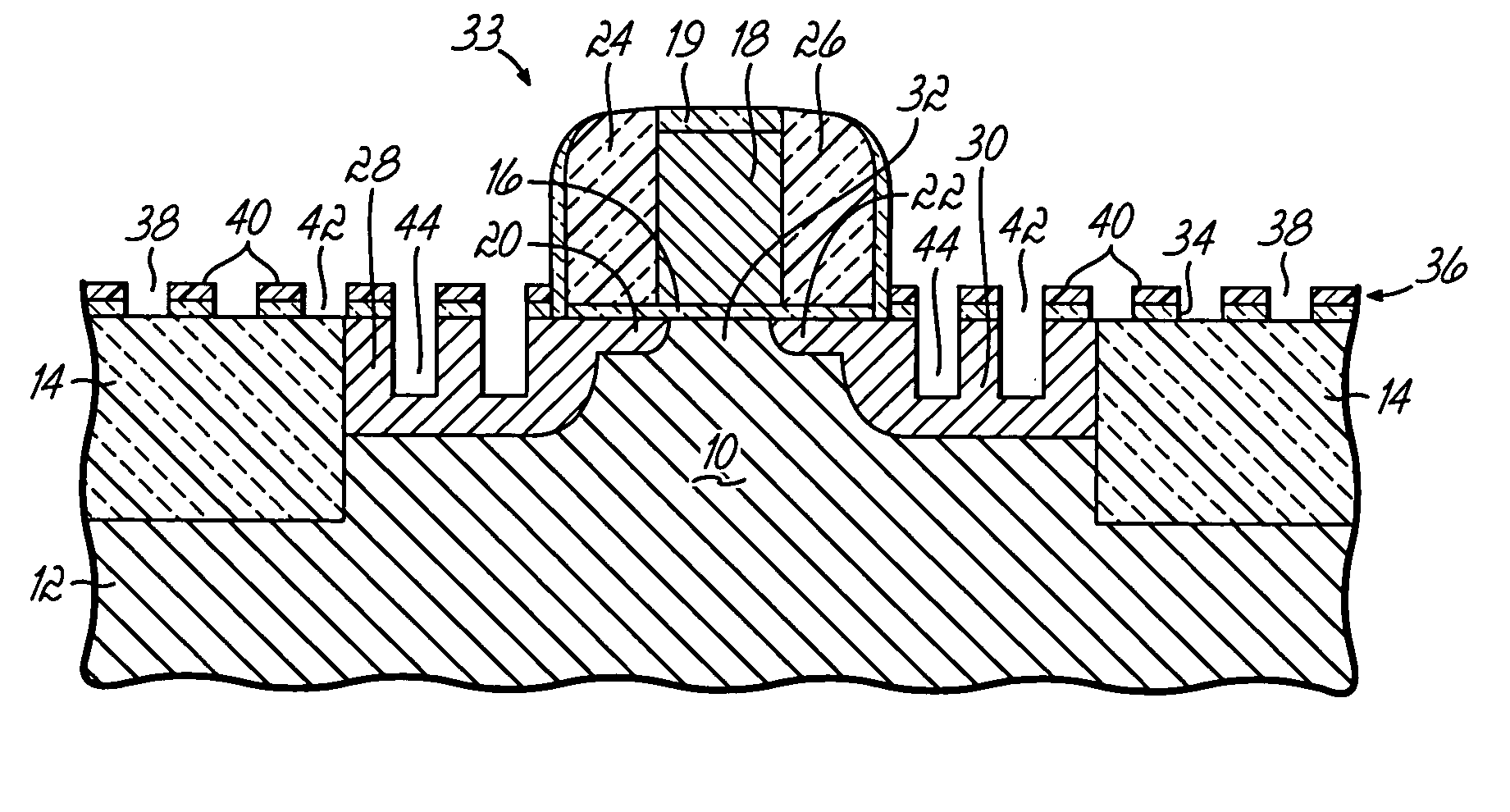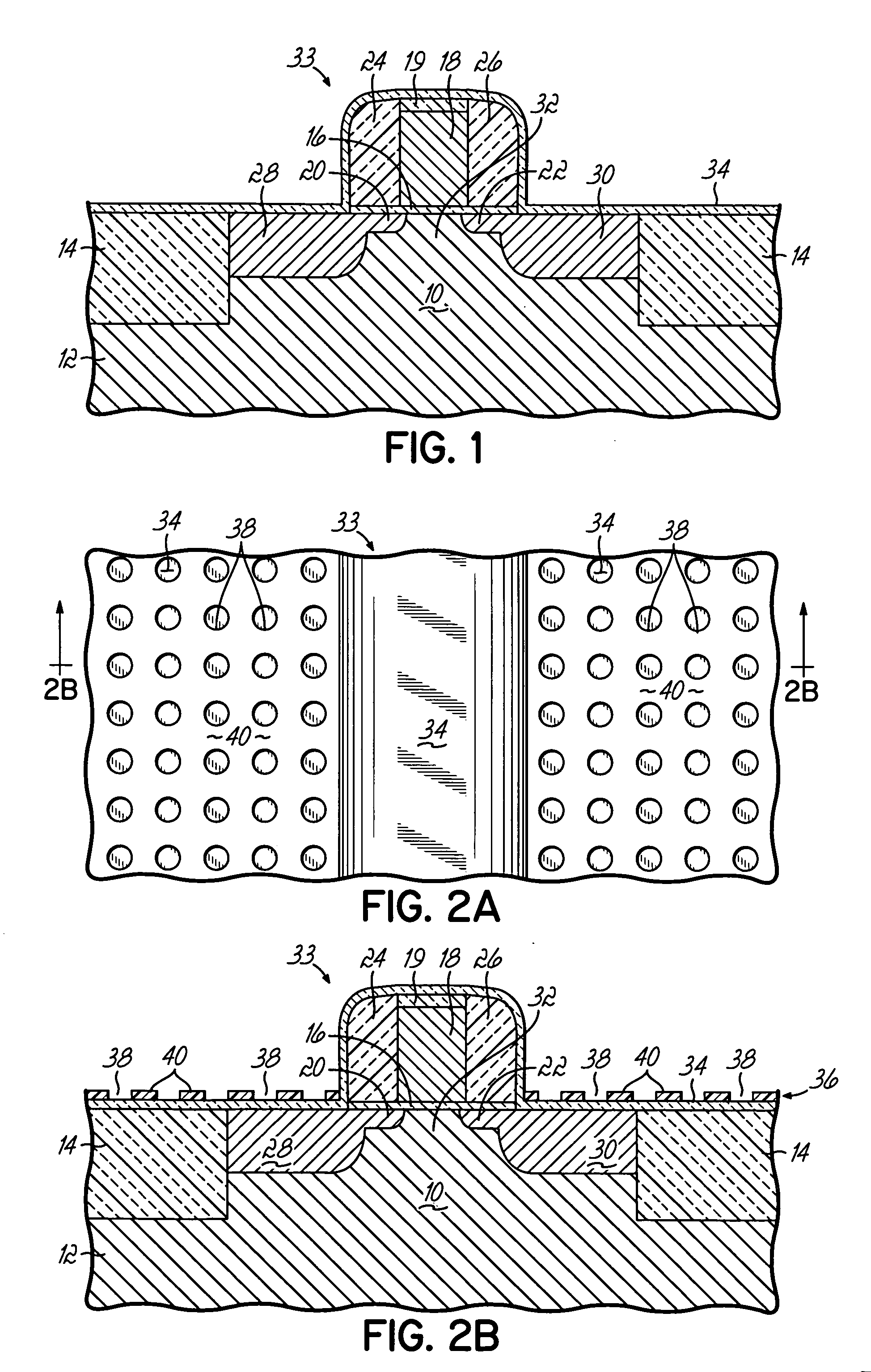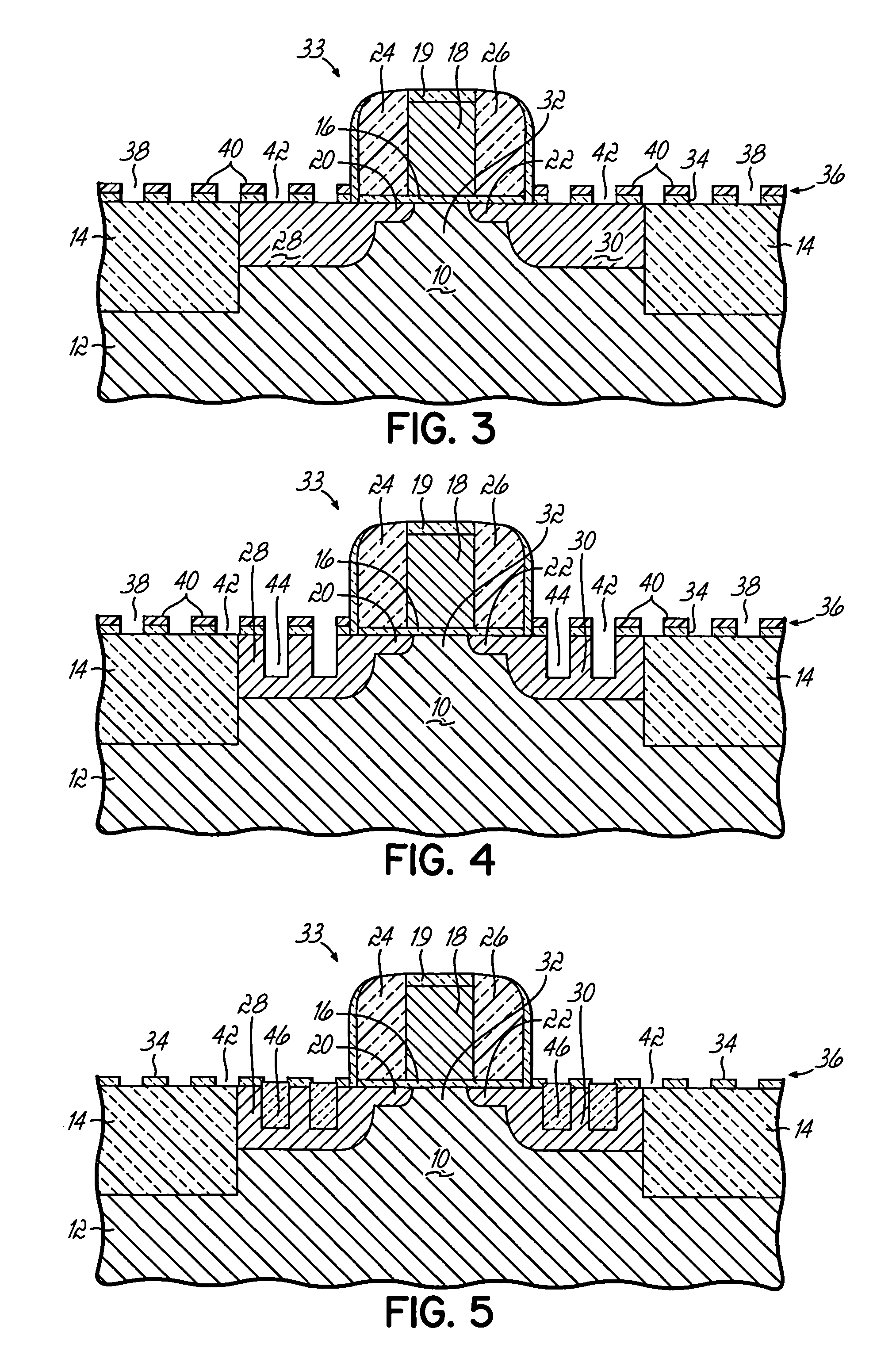Method for fabricating strained semiconductor structures and strained semiconductor structures formed thereby
a technology of strained semiconductors and semiconductor structures, applied in semiconductor devices, semiconductor/solid-state device details, electrical apparatus, etc., can solve the problems that conventional semiconductor lithography cannot obtain nanometer-scale feature sizes for strained features in source/drain regions, and achieve improved switching speed and low-power, improve one or more operational characteristics of the device, and improve the performance of the semiconductor device
- Summary
- Abstract
- Description
- Claims
- Application Information
AI Technical Summary
Benefits of technology
Problems solved by technology
Method used
Image
Examples
Embodiment Construction
[0019] With reference to FIG. 1, a number of body regions, of which a single body region 10 is depicted, are defined in a substrate 12 of a suitable semiconductor material such as silicon. Substrate 12 may be, for example, a bulk substrate or the active layer of a silicon-on-insulator (SOI) substrate. Adjacent body regions 10 are isolated electrically by shallow trench isolation (STI) regions 14. The STI regions 14 are formed by conventional STI isolation techniques, such as defining trenches in substrate 12, filling the trenches with a dielectric material like silicon dioxide (SiO2) deposited by chemical vapor deposition, and planarizing to remove excess dielectric material by chemical-mechanical polishing (CMP) or any other suitable planarization technique such as an etch back process. The upper horizontal surfaces of the body regions 10 and the STI regions 14 are approximately level after planarization. It will be appreciated that other device isolation techniques, such as field ...
PUM
 Login to View More
Login to View More Abstract
Description
Claims
Application Information
 Login to View More
Login to View More - R&D
- Intellectual Property
- Life Sciences
- Materials
- Tech Scout
- Unparalleled Data Quality
- Higher Quality Content
- 60% Fewer Hallucinations
Browse by: Latest US Patents, China's latest patents, Technical Efficacy Thesaurus, Application Domain, Technology Topic, Popular Technical Reports.
© 2025 PatSnap. All rights reserved.Legal|Privacy policy|Modern Slavery Act Transparency Statement|Sitemap|About US| Contact US: help@patsnap.com



